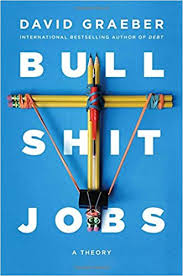HILLBILLY ELEGY: A MEMOIR OF A FAMILY AND CULTURE IN CRISIS-J.D. VANCE
AVAILABLE This book made a bit of a splash when it came out and I remember reading reviews and hearing takes about how it had this great insight into white working-class culture and, though indirectly, into Trump. This book was allegedly supposed to be more nuanced then the dismissive these-people-are-a-little-stupid-and-a-lot-racist stereotype the costal elites, who Vance rails against constantly in the book, hold against hillbillys. Honestly, this didn’t seem super interesting and I ignored it. Fast forward to a few months later, now I’m in South Africa, on a Safari, with my girlfriend’s family. When it comes to talking about racial justice and equity and (the scariest one) privilege, as a white person to one’s family, even when they’re well-meaning (and often when they very much aren’t) can be tricky because of all sorts of complex, emotional entanglements. Might I suggest having these talks with your significant other’s family? Much easier. Anyway, apparently drinking tons of beer is part of safari-ing and I was a bit drunk and talking about reparations and my girlfriend’s dad was listening and disagreeing but being polite and maybe I was a bit drunker than I thought because I don’t remember him telling me about this book but, fast-forward again, I received it in the mail, paid for and shipped by him, Hillbilly Elegy. I love the idea of being mailed free books. I’ll read anything picked out for me and mailed to my door. Mail me books. Either way, despite my excitement about it came into my possession, Hillbilly Elegy is not good. The broader cultural discussion around this book lead me to believe that the book was mostly about White working-class culture and what’s currently imperiling it from an insider with insight. It is occasionally that throughout, especially towards the end, but it is mostly a very personal memoir from someone who had a chaotic childhood who connects that experience to a broader social category. It’s roughly the same format as “The Beautiful Struggle” which is about a childhood in inner-city Baltimore (These book also both contain really fawning sections about the universities the authors attended. Yale for Vance, Howard for Coates), and “You don’t have to say you love me” which is about life on an Indian Reservation. Hillbilly Elegy is the worst of these three, easily. The man had a sad, drug addict mom who he doesn’t really like and a maniac grandma who protects him and whom he loves. One wishes that Vance had just written a biography of his grandma, who’s life seems much more interesting than his, especially the parts of his life she isn’t around for. He becomes a marine that does media. He goes to law school at Yale and feels sort of weird for having been poor. As far as the insight into White working-class culture and what ails it, there isn’t really a lot there. He thinks poor Whites need to work harder and stop blaming the government. He’s the Bill Cosby (the post-shows-but-pre-scandal Bill) of poor whites. He also really seems to bend over backwards to avoid calling the White working-class, taken as a whole, racist. Take for instance the poll, which Vance cites, that says over half of conservative White Americans believe that Obama was not really American. It seems impossible to chalk that up to anything but profound and predictable racism but Vance certainly tries:
“Many of my new friends blame racism for this perception off the president. But the president feels lie and alien to many Middletonians for reasons that have nothing to do with skin color. Recall that not a single one of my high school classmates attended an Ivy League school. Barack Obama attended two of then and excelled at both. He is brilliant, wealthy and speaks like a constitutional law professor-which, of course, he is. Nothing about him bears any resemblance to the people I admired growing up…Of course, Obama overcame adversity in his own right-adversity familiar to many of us-but that was long before any of us knew him…Barack Obama strikes at the heard of our deepest insecurities. He is a good father while many of us aren’t. He wears a suit while we wear overalls, if we’re lucky enough to have a job at all. His wife tells us that we shouldn’t be feeding our children certain food, and we hate him for it-not because we think she’s wrong but because we know she’s right.”
Incredible. Imagine the mental gymnastics required to ignore that George W. Bush, a human cartoon character of privilege and a rigged system, and Donald Trump, a rich-kid con man who hates the poor and was a major amplifier of the very rumors Vance is explaining away, book-end Obama’s tenure. And yet Obama alone is the focus of this totally classed-based and not at all racist anger that has, regrettably, takes the form of these absurd but certainly not racist beliefs about his origins. Fuck outta here. 5 Stars for getting books for free in the mail. One star for this book.


















